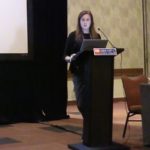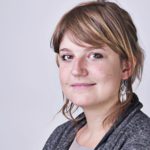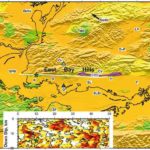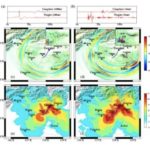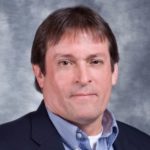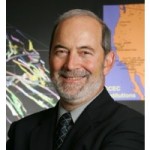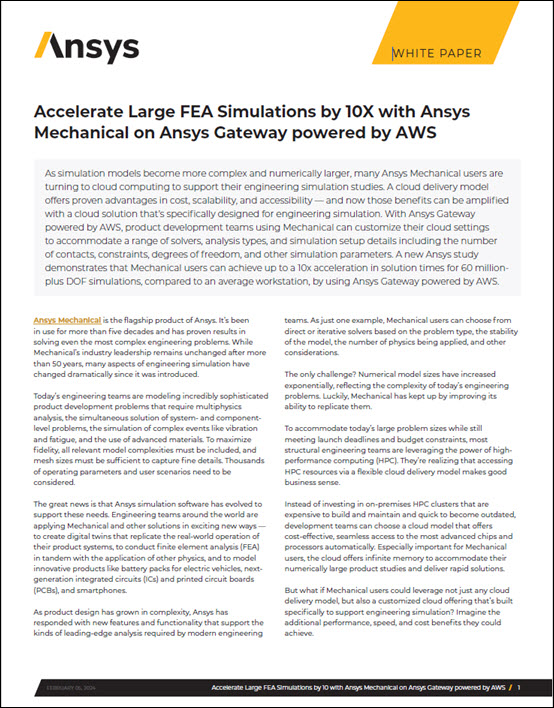Christine Goulet from the Southern California Earthquake Center gave this talk at the HPC User Forum in Tucson. “SCEC coordinates fundamental research on earthquake processes using Southern California as its principal natural laboratory. The SCEC community advances earthquake system science through synthesizing knowledge of earthquake phenomena through physics-based modeling, including system-level hazard modeling and communicating our understanding of seismic hazards to reduce earthquake risk and promote community resilience.”
PASC18 Keynote to Focus on Extreme-Scale Multi-Physics Earthquake Simulations
Today the PASC18 conference announced that Alice-Agnes Gabriel from Ludwig-Maximilian-University of Munich will deliver a keynote address on earthquake simulation. ” This talk will focus on using physics-based scenarios, modern numerical methods and hardware specific optimizations to shed light on the dynamics, and severity, of earthquake behavior. It will present the largest-scale dynamic earthquake rupture simulation to date, which models the 2004 Sumatra-Andaman event – an unexpected subduction zone earthquake which generated a rupture of over 1,500 km in length within the ocean floor followed by a series of devastating tsunamis.”
Hayward Fault Earthquake Simulations Increase Fidelity of Ground Motions
Researchers at LLNL are using supercomputers to simulate the onset of earthquakes in California. “This study shows that powerful supercomputing can be used to calculate earthquake shaking on a large, regional scale with more realism than we’ve ever been able to produce before,” said Artie Rodgers, LLNL seismologist and lead author of the paper.”
SDSC Earthquake Codes Used in 2017 Gordon Bell Prize Research
A Chinese team of researchers awarded this year’s prestigious Gordon Bell prize for simulating the devastating 1976 earthquake in Tangshan, China, used an open-source code developed by researchers at the San Diego Supercomputer Center (SDSC) at UC San Diego and San Diego State University (SDSU) with support from the Southern California Earthquake Center (SCEC). “We congratulate the researchers for their impressive innovations porting our earthquake software code, and in turn for advancing the overall state of seismic research that will have far-reaching benefits around the world,” said Yifeng Cui, director of SDSC’s High Performance Geocomputing Laboratory, who along with SDSU Geological Sciences Professor Kim Olsen, Professor Emeritus Steven Day and researcher Daniel Roten developed the AWP-ODC code.
Supercomputing Earthquakes in the Age of Exascale
Tomorrow’s exascale supercomputers will enable researchers to accurately simulate the ground motions of regional earthquakes quickly and in unprecedented detail. “Simulations of high frequency earthquakes are more computationally demanding and will require exascale computers,” said David McCallen, who leads the ECP-supported effort. “Ultimately, we’d like to get to a much larger domain, higher frequency resolution and speed up our simulation time.”
Second Intel Parallel Computing Center Opens at SDSC
Intel has opened a second parallel computing center at the San Diego Supercomputer Center (SDSC), at the University of California, San Diego. The focus of this new engagement is on earthquake research, including detailed computer simulations of major seismic activity that can be used to better inform and assist disaster recovery and relief efforts.
Podcast: Societal Impact of Earthquake Simulations at Extreme Scale
In this TACC podcast, the Thomas Jordan from the University of Southern California describes how he uses the computational resources of XSEDE, the Extreme Science and Engineering Discovery Environment, to model earthquakes and help reduce their risk to life and property. Dr. Jordan was invited to speak at SC15 on the Societal Impact of Earthquake Simulations at Extreme Scale.

